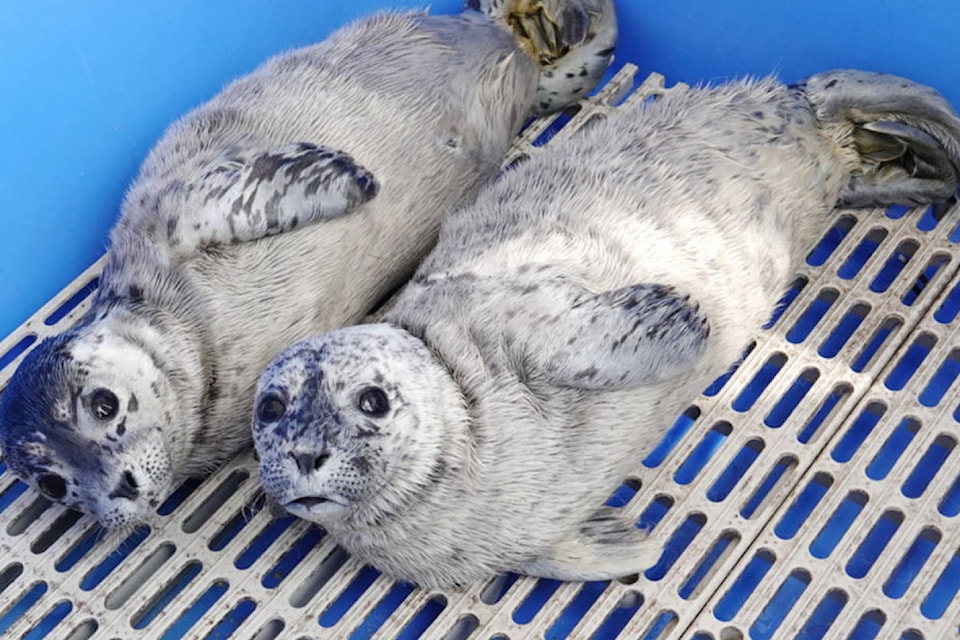Kit Thornton, head of animal care at Sidney’s Shaw Centre for the Salish Sea, is preparing to help and possibly house, if only for a short while, rescued harbour seal pups.
By virtue of its location, trained staff and resources, the centre plays an important role in helping the Vancouver-based Marine Mammal Rescue (MMR) centre do its job.
Thornton, who previously worked at the centre and holds a diploma in Veterinary Technology in addition to being a marine biologist, expects pups to be coming soon.
“It is definitely getting to the end of May, the start of June, when they start to come in,” she said.
Pupping season for harbour seals usually starts in late May and mothers will periodically leave single pups alone for several hours while foraging. It’s not uncommon to see a lone seal pup on shore, Thornton added.
“Usually, the mom stays pretty close in the vicinity.”
Thornton offers this advice to anyone who comes across a lone seal on shore: “The best thing to do is to stay back, and when in doubt, call the (MMR). They have people there answering the phones and they will be able to give you the absolute best guidance for that particular situation.”
MMR experts may monitor an animal for up to 24 hours, she added.
Occasions do arise when the rescue centre asks staff at the Shaw Centre to help rescue seal pups, the most common cause being maternal separation. Reasons that may separate mothers from pups include disruptive behaviour from humans and dogs, which is increasing, said Thornton. “Or else, the mum hasn’t come back. Maybe she was eaten by an orca or something.”
RELATED: Sidney Island visitors asked to stay away from seal pups
In 2020, Shaw Centre staff helped rescue four pups, one more than in 2019 and two more than 2018.
The good news first: all of them were later released into the wild after undergoing rehabilitation.
“When they are found, they usually have been away from their moms for 24 to 48 hours,” Thornton said, and often they are dehydrated. “You can tell if they are dehydrated, because they have very dry fur around their eyes. A well-hydrated, healthy seal pup will naturally have ‘wet eye rings.’”
They will also appear very underweight, she said, noting that “a seal pup should be nice and round.” Other signs include extra skinfolds and protruding hip bones. Common injuries pups are found with include lacerations to their flippers and issues with their eyes.
If asked to look after an animal, centre staff will assess it and make travel arrangements to MMR by boat, helicopter or Harbour Air, which often delivers animals at no cost, said Thornton.
If immediate transport is not possible, the animal stays overnight at the centre before being shipped out to Vancouver for specialized care to address injuries and help recovery. The animal then undergoes training to learn the skills needed to survive in the wild. Once it has proven its ability to thrive it is weighed, health-checked, tagged and released back into the wild.
MRR rehabilitates more than 100 marine mammals per year. It can be reached at 1-604-258-7325 or find more information at vanaqua.org/marine-mammal-rescue.
